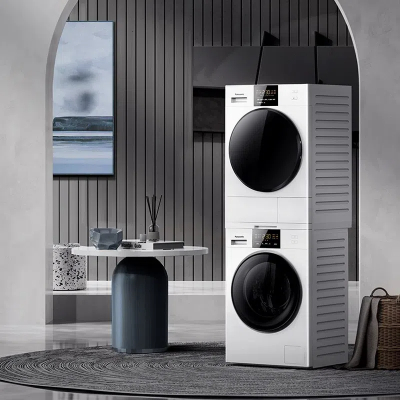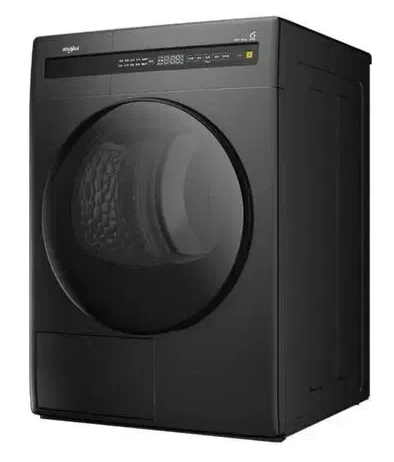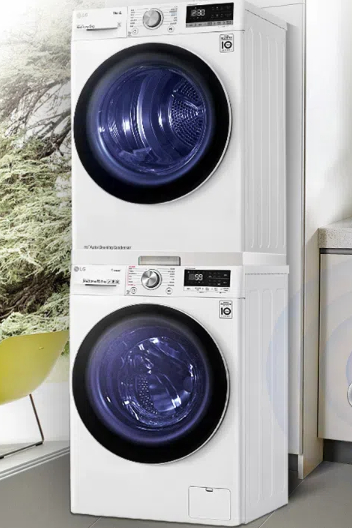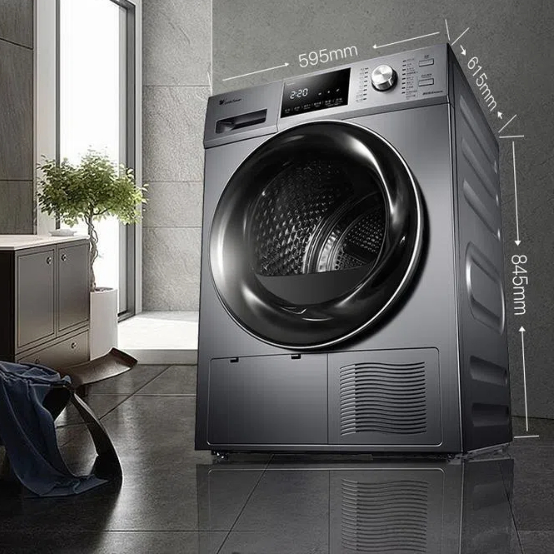
Content Menu
● Introduction to Heat Pump Tumble Dryers
● Understanding Heat Pump Technology in Tumble Dryers
● The Major Disadvantages of Heat Pump Tumble Dryers
>> 1. Higher Initial Cost
>> 2. Longer Drying Times
>> 3. Limited Capacity
>> 4. Performance in Cold Environments
>> 5. Maintenance Requirements
>> 6. Sensitive to Overloading
>> 7. Potential for Higher Repair Costs
● Efficiency and Energy Consumption
>> Energy Efficiency Ratings
● Performance Issues and Considerations
>> Temperature Limitations
>> Drying Effectiveness for Different Fabrics
>> Noise Levels
● Weighing the Pros and Cons
>> Pros:
>> Cons:
● Is a Heat Pump Tumble Dryer Right for You?
● Conclusion
● Frequently Asked Questions
>> Q1: How much more expensive are heat pump tumble dryers compared to conventional models?
>> Q2: Do heat pump dryers require special installation?
>> Q3: How much longer does a heat pump dryer take to dry clothes compared to a conventional dryer?
>> Q4: Are heat pump dryers suitable for all types of fabrics?
>> Q5: How much can I expect to save on energy bills with a heat pump dryer?
Introduction to Heat Pump Tumble Dryers
In recent years, heat pump tumble dryers have gained popularity as an energy-efficient alternative to traditional tumble dryers. These innovative appliances use advanced technology to dry clothes while consuming less energy. However, like any technology, they come with their own set of advantages and disadvantages. In this comprehensive guide, we'll explore the drawbacks of heat pump tumble dryers, examine their efficiency, and discuss performance issues to help you make an informed decision about whether this appliance is right for your home.
Understanding Heat Pump Technology in Tumble Dryers
Before delving into the disadvantages, it's essential to understand how heat pump tumble dryers work. Unlike conventional dryers that expel hot air, heat pump dryers recirculate air within the drum. They use a refrigerant to remove moisture from the air and then reheat it before sending it back into the drum. This closed-loop system is what makes them more energy-efficient than traditional models.

The Major Disadvantages of Heat Pump Tumble Dryers
1. Higher Initial Cost
One of the most significant drawbacks of heat pump tumble dryers is their higher upfront cost. These appliances are typically more expensive than conventional vented or condenser dryers. The advanced technology and components used in heat pump dryers contribute to their premium price tag. While the long-term energy savings can offset this initial investment, the higher purchase price can be a barrier for many consumers.
2. Longer Drying Times
Heat pump tumble dryers are known for their longer drying cycles. Because they operate at lower temperatures than traditional dryers, it takes more time to remove moisture from clothes. A typical load that might take an hour in a conventional dryer could take up to 30-40 minutes longer in a heat pump model. This extended drying time can be inconvenient for households that need to process multiple loads of laundry quickly.
3. Limited Capacity
Many heat pump tumble dryers have a smaller drum capacity compared to their conventional counterparts. This limitation is due to the space required for the heat pump technology within the appliance. As a result, you may need to do more frequent loads, especially if you have a large family or regularly wash bulky items like bedding or towels.
4. Performance in Cold Environments
Heat pump dryers may experience reduced efficiency in very cold environments. The technology relies on ambient air temperature to some extent, and extremely cold conditions can affect the heat pump's performance. This can lead to even longer drying times or less effective moisture removal in colder climates or unheated spaces.
5. Maintenance Requirements
While heat pump dryers generally have lower maintenance needs than vented dryers, they do require some specific care. The heat exchanger and filters need regular cleaning to maintain optimal performance. Neglecting this maintenance can lead to reduced efficiency and potentially shorter lifespan of the appliance.
6. Sensitive to Overloading
Heat pump dryers are more sensitive to overloading than traditional models. Overfilling the drum can significantly increase drying times and reduce efficiency. Users need to be more mindful of load sizes to ensure optimal performance, which may require a change in laundry habits.
7. Potential for Higher Repair Costs
Due to the complexity of the heat pump system, repairs can be more expensive if something goes wrong outside of the warranty period. The specialized components and technology may require expert technicians, potentially leading to higher service costs compared to simpler dryer models.
Efficiency and Energy Consumption
Despite these disadvantages, it's important to note that heat pump tumble dryers excel in energy efficiency. They typically use 40-50% less energy than conventional dryers, which can lead to significant savings on electricity bills over time. This reduced energy consumption also translates to a lower carbon footprint, making heat pump dryers an environmentally friendly choice.
Energy Efficiency Ratings
Heat pump tumble dryers often achieve the highest energy efficiency ratings, with many models boasting A+++ ratings on the EU energy label scale. This superior efficiency is a major selling point and can offset some of the disadvantages for environmentally conscious consumers or those looking to reduce their long-term energy costs.
Performance Issues and Considerations
Temperature Limitations
Heat pump dryers operate at lower temperatures than conventional dryers. While this is gentler on clothes and contributes to energy savings, it can also lead to some performance issues. Certain fabrics or heavily soiled items may not dry as effectively, and some stains that high heat helps to remove may persist.
Drying Effectiveness for Different Fabrics
The lower drying temperatures of heat pump dryers can be both an advantage and a disadvantage depending on the type of fabric:
- Delicate fabrics benefit from the lower heat, experiencing less wear and tear.
- Heavy fabrics like denim or towels may take significantly longer to dry completely.
- Some users report that clothes don't feel as "crisp" or warm when the cycle ends, compared to traditional dryers.
Noise Levels
Heat pump dryers are generally quieter than conventional vented dryers due to their closed-loop system. However, the compressor can produce a different type of noise that some users find noticeable, especially in quiet environments or if the dryer is located near living spaces.

Weighing the Pros and Cons
To provide a balanced view, let's summarize the main advantages and disadvantages of heat pump tumble dryers:
Pros:
1. Highly energy-efficient, using up to 50% less energy than conventional dryers
2. Lower running costs over time
3. Gentler on clothes due to lower drying temperatures
4. No need for external venting, offering flexible installation options
5. Environmentally friendly with a lower carbon footprint
Cons:
1. Higher initial purchase price
2. Longer drying times
3. Smaller drum capacity in many models
4. Potential performance issues in very cold environments
5. More sensitive to overloading
6. Possible higher repair costs
Is a Heat Pump Tumble Dryer Right for You?
Deciding whether a heat pump tumble dryer is the right choice depends on various factors:
- If energy efficiency and long-term cost savings are your primary concerns, a heat pump dryer could be an excellent investment.
- For those with limited time who need quick drying cycles, the longer drying times might be a significant drawback.
- Households with high laundry volumes may find the smaller capacity limiting.
- If you're environmentally conscious and looking to reduce your carbon footprint, the energy savings of a heat pump dryer align well with these goals.
- Consider your climate; if you live in an area with extremely cold winters, you may need to factor in potential performance issues.
Conclusion
Heat pump tumble dryers represent a significant advancement in laundry technology, offering impressive energy efficiency and environmental benefits. However, they come with trade-offs in terms of initial cost, drying time, and capacity. By understanding these disadvantages alongside the benefits, you can make an informed decision about whether a heat pump tumble dryer is the right choice for your household needs and values.
As technology continues to evolve, we may see improvements that address some of the current limitations of heat pump dryers. For now, they remain a compelling option for those prioritizing energy efficiency and willing to adapt to a different drying process.

Frequently Asked Questions
Q1: How much more expensive are heat pump tumble dryers compared to conventional models?
A1: Heat pump tumble dryers can cost anywhere from 30% to 100% more than conventional vented or condenser dryers, depending on the brand and features. However, the energy savings over time can offset this higher initial investment.
Q2: Do heat pump dryers require special installation?
A2: One advantage of heat pump dryers is that they don't require external venting. This makes them more flexible in terms of installation locations. However, they do need proper ventilation around the unit and may require a drain connection or regular emptying of a water container.
Q3: How much longer does a heat pump dryer take to dry clothes compared to a conventional dryer?
A3: On average, heat pump dryers can take 30-40 minutes longer than conventional dryers for a typical load. A cycle that might take 60 minutes in a traditional dryer could take 90-100 minutes in a heat pump model.
Q4: Are heat pump dryers suitable for all types of fabrics?
A4: Heat pump dryers are generally suitable for most fabrics and are particularly good for delicates due to their lower operating temperatures. However, very heavy fabrics or large, bulky items may take significantly longer to dry completely.
Q5: How much can I expect to save on energy bills with a heat pump dryer?
A5: Energy savings can be substantial, with heat pump dryers using up to 50% less energy than conventional models. The exact savings will depend on your usage patterns, local energy costs, and the specific models being compared. Some estimates suggest savings of $20 to $50 per year on electricity bills, but this can vary widely.












